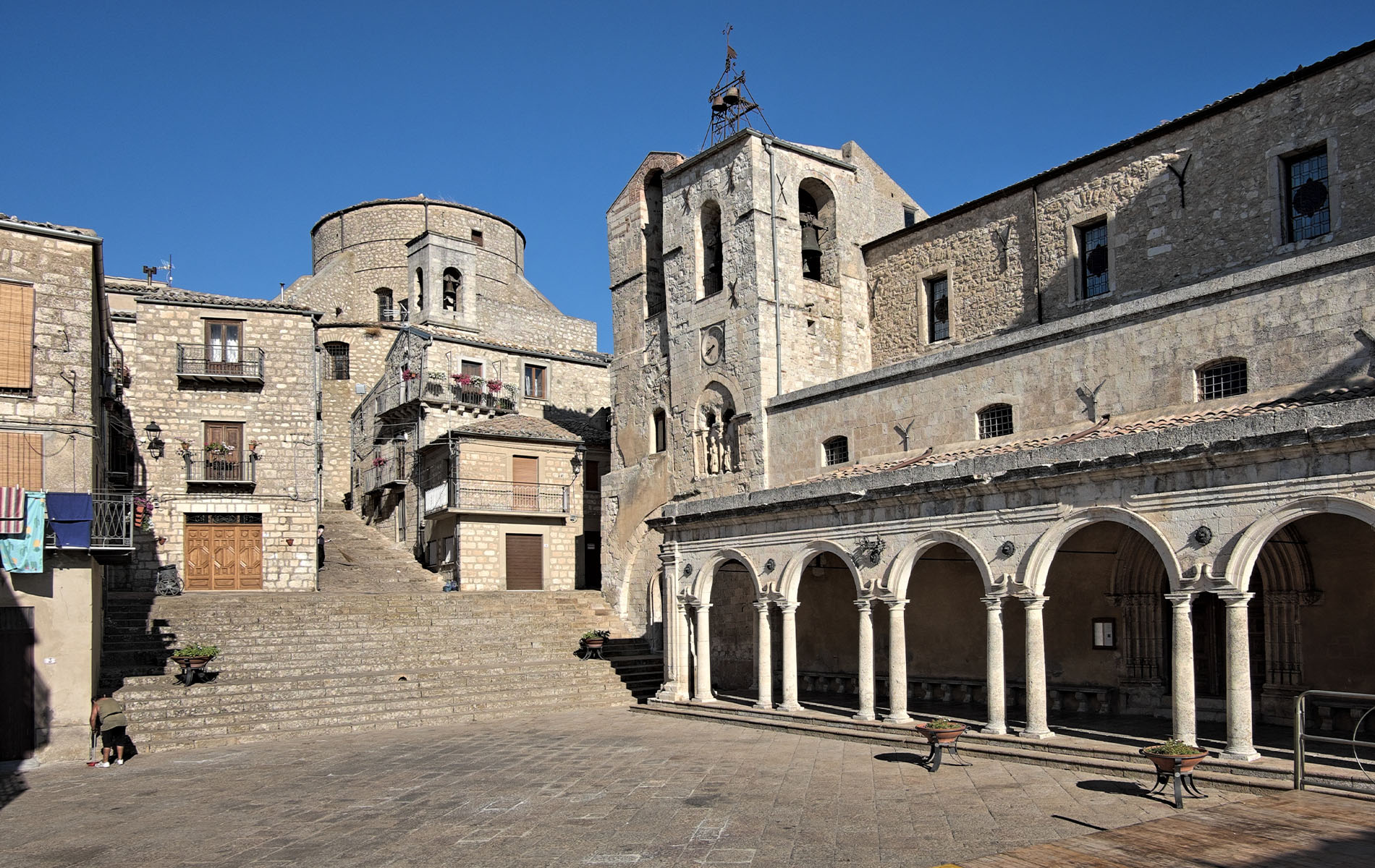Petralia Soprana, voted Italy’s most beautiful borgo (old medieval village) in 2018, rises 1,147 metres (a.s.l.) above sea level and is therefore the highest village in the Madonie. Petralia Soprana is the perfect destination for any type of trip, whether you are an adventurer or a history lover.
For a natural itinerary, excursions within the Madonie Park, of which the town itself is a part, are recommended and can also be fun if done in the Adventure Park. If, on the other hand, the objective is the rediscovery of the Sicilian folk tradition, there are numerous guided tours to local artisans’ workshops, historical pastry shops or to the farms that populate the area and that also satisfy the culinary curiosity of visitors.
What is still fascinating about Petralia Soprana is its ability to evoke the past, of which one can find evidence even during a simple walk through the alleys.
The Churches of Petralia Soprana
Petralia Soprana’s historical and cultural offerings are vast, since its history encompasses several dominations – Roman, Arab, Norman. This is reflected in the architecture, starting with the churches, which stand out as points of interest. Among these, the Mother Church of the Holy Apostles Peter and Paul and the Sanctuary of Santa Maria di Loreto are definitely worth a visit.
The first one is consecrated to the two patron saints of the city, Peter and Paul, and is a clear evidence of the various layers of stratification from different eras. Its particular orientation suggests that, during the Arab domination, it started out as a mosque, which was converted into a Greek cross church in the Norman age. In the 14th century, it was rebuilt at the behest of the Ventimiglia family, specifically Antonio Ventimiglia, and the work was completed in 1497, as stated on the internal plaque above the portal, and finally in the 18th century a third nave was added and the second bell tower was built. At either end of the church are two bell towers, one erected in the 15th century and the other completed only in the 1960s, inside of which is a bell called the ‘bell of the Union’; they are connected by a portico of 18 columns.
The second one is the Church of Santa Maria di Loreto, located in the highest part of the village, on the site where a Saracen fortress once stood; on its ashes, a convent and the small church of Sant’Elia were built by the Order of Carmelitani Scalzi; the convent was later abandoned and the small church changed its name to Santa Maria di Loreto.
Behind the Church of Santa Maria di Loreto, there is a panoramic terrace and a small path leading to one of Petralia Soprana’s three belvederes, which provides a view of the valley below, all the way to Mount Etna; the second one, the Carmine belvedere, offers a view of western Sicily towards Palermo, and the last one, the Piazza Duomo belvedere, allows a view of Gangi.
Within the village are several palazzo nobiliare (noble palaces), including the Palazzo Pottino, the private home of Marquis Pottino di Echifaldo. Located in Piazza Quattro Cannoli, it is a historic residence that can be visited and allows total immersion in the typical atmosphere of the Sicilian aristocracy of the second half of the 19th century.
The palazzo still contains the original furniture, which reveals the refinement and taste of the owners, perfectly recognisable throughout the building, particularly in the reception hall, where parties, balls and official visits were usually held. Inside, the ceiling is frescoed, the wooden furnishings are hand inlaid by local craftsmen, and the precious tapestries highlight social status, all dominated by a crystal chandelier.
There is also a chapel inside the palace, which on the one hand allowed for a connection with God, but on the other allowed for a detachment from the peasant environment by allowing the aristocrats to not participate in rituals outside their own walls.
Not far from the centre, in the hamlet of Raffo, it is possible to visit the still-active Italkali rock salt mine, which can be visited along a 400-metre route accompanied by a guide and the thirty salt works belonging to the MACSS (Museo di Arte Contemporanea Sotto Sale – Museum of Contemporary Art Under Salt) and located inside the mine.
Petralia Soprana offers numerous experiences, you just have to decide which ones to start discovering this fascinating Sicilian village.




